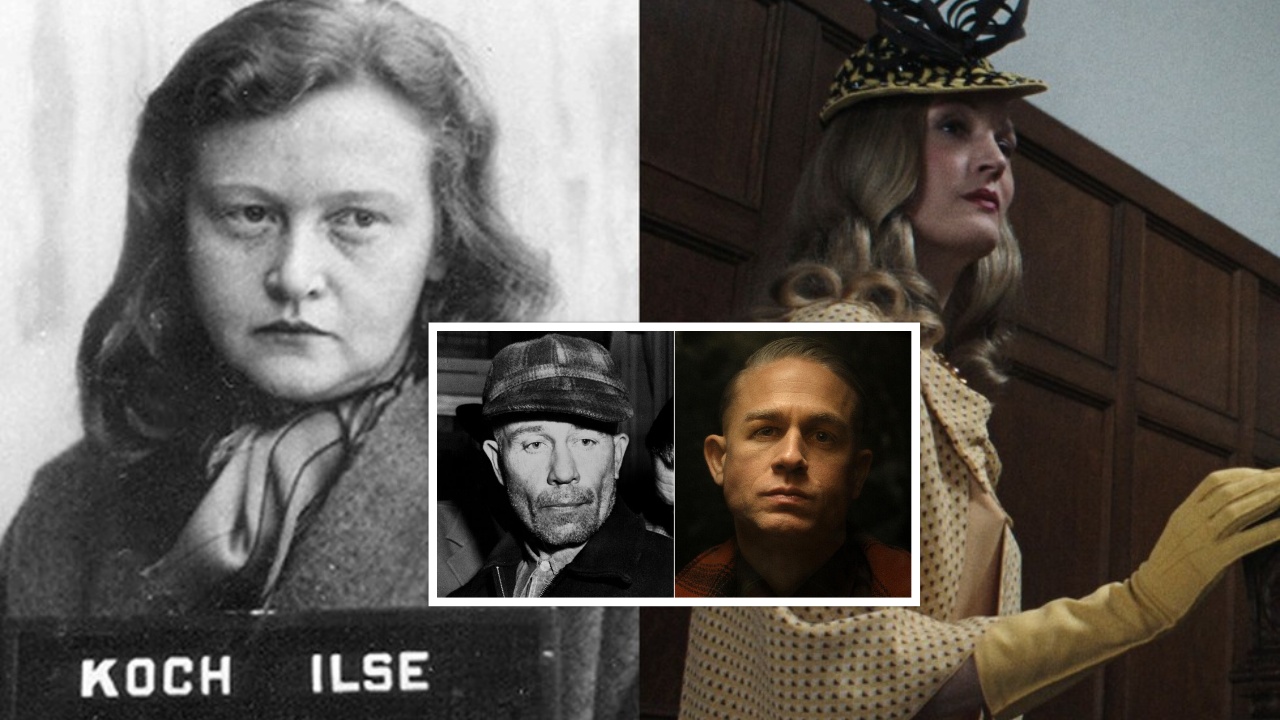Ed Gein, a reclusive Wisconsin farmer, and Ilse Koch, a notorious figure in Nazi Germany, are linked by their gruesome fascination with human remains, sparking questions about whether they ever communicated. Gein’s 1957 arrest revealed a farmhouse filled with horrific creations—masks, furniture, and clothing made from the skin and bones of exhumed corpses and two murdered women.
Koch, tried in 1947 for her role in Buchenwald’s atrocities, was infamous for allegedly ordering prisoners’ deaths to craft items from their tattooed skin. The chilling parallels between their acts have fueled speculation, especially with recent dramatizations like Netflix’s Monster: The Ed Gein Story (2025), which imagines a hallucinatory radio conversation between them. Could these two figures, separated by continents and eras, have actually spoken?
You Might Like: Eve Jobs Net Worth: Inside Her $1M Fortune in 2025
The idea of a connection persists, driven by their shared macabre interests and media portrayals that blur fact and fiction. Gein’s isolated existence in rural America and Koch’s prominence in the Nazi regime seem worlds apart, yet the question lingers: did they exchange ideas, letters, or words? A close look at their lives, timelines, and historical records provides insight into whether such a conversation ever occurred.
Lives Defined by Darkness
Ed Gein was born in 1906 in Plainfield, Wisconsin, a small town where fields stretched endlessly under gray skies. Raised by a domineering mother, Augusta, who preached strict moral codes, Gein withdrew into solitude after her death in 1945. He began robbing graves, targeting women who resembled Augusta, and fashioned grotesque relics: a belt of human nipples, a lampshade from skin, and a suit stitched from female torsos.
His crimes escalated to the murders of tavern owner Mary Hogan in 1954 and hardware store clerk Bernice Worden in 1957. Police found his home cluttered with anatomy books, crime magazines, and lurid stories of Nazi horrors, suggesting he devoured tales of distant atrocities. After his arrest, Gein was committed to a mental hospital, where he spoke of his mother’s influence but never mentioned foreign figures like Koch.
Ed Gein uttered one word and the vibes were instantly off pic.twitter.com/dB6cZXoGnZ
— Netflix (@netflix) October 4, 2025
Ilse Koch, born in 1906 in Dresden, Germany, carved a different path to infamy. Married to Buchenwald’s commandant, Karl Koch, she lived in luxury overlooking the camp’s misery. Known as the “Beast of Buchenwald,” she allegedly selected prisoners with unique tattoos, ordering their executions to create items like gloves and bookbindings from their skin.
Her 1947 trial by U.S. authorities detailed these horrors, though forensic doubts later emerged about some artifacts, like a supposed human-skin lampshade. Sentenced to life, Koch died by suicide in prison in 1967. Her trial made global headlines, with American newspapers sensationalizing her as a collector of human trophies, stories that reached rural readers like Gein.
Exploring a Possible Connection
The notion of Gein and Koch speaking stems from their shared obsession with human skin, amplified by fictional depictions like the hallucinatory radio scene in Monster: The Ed Gein Story, where Gein imagines Koch’s voice in a schizophrenic episode. In reality, no evidence supports such contact. Gein’s interrogations revealed his fixation on his mother and grave-robbing, with no mention of Koch. His possessions included magazines with articles about her 1947 trial, which captivated American readers with tales of her skin collection. These stories, printed in publications like True Crime Detective, likely reached Gein’s isolated farmhouse, possibly inspiring his own creations, such as a lampshade made from Worden’s skin.
Good thing they knocked before walking in…
Monster: The Ed Gein Story is now playing pic.twitter.com/GPpFCFaSaQ
— Netflix (@netflix) October 5, 2025
Historical records offer no trace of communication. Gein’s FBI files detail his crimes and mental state but lack references to Koch or international correspondence. Koch’s trial documents, preserved by Allied forces, mention no American contacts beyond her interrogators. Their timelines further weaken the theory: Koch’s crimes peaked in the early 1940s, while Gein’s intensified a decade later. While Koch’s trial publicity may have planted seeds in Gein’s mind, no letters, calls, or meetings link them.
Also See: Charlie Hunnam’s Wife and Kids: Is He a Married Man?
The Netflix series’ imagined dialogue is just that—fiction weaving their stories for dramatic effect. In truth, Gein and Koch were solitary figures whose parallel horrors, though eerily similar, remained unconnected, their only “conversation” existing in the myths that endure.








